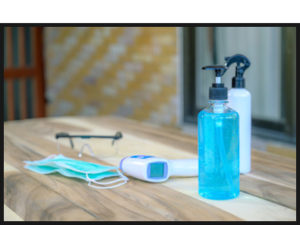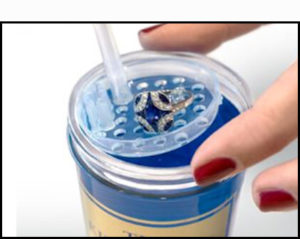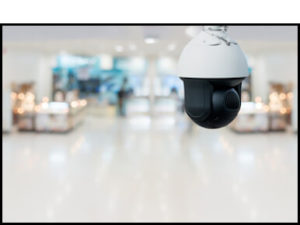When it’s Time To Re-Open

Re-opening during a global pandemic is an unprecedented event for retailers.
The concerns and unknown risks about how to conduct business during this “new normal” are many. This is especially true in the jewelry business, as so much of the purchase experience is customer interaction, combined with the look, touch and feel of the merchandise.
For the past few months, it has been about tackling and getting right human resources and employment issues; retail leasing and access to financial relief; and operational adjustments needed to function remotely or in a new way, describes Tiffany Stevens, CEO and General Counsel for the Jewelers Vigilance Committee (JVC). “Now, we’re looking towards surviving long term.”
 As an organization focused on mitigating legal risk and optimizing business success for jewelers, JVC advises retailers be properly prepared for the long-term. “This is said acknowledging the extreme financial stress many brick and mortar retailers are under,” notes Stevens. “Be thoughtful about the decision to reopen and its potential long-term impacts to you. If you do re-open, set up for success on the front end, and take proper precautions. We anticipate lawsuits and claims around safety and HR issues, as well as privacy matters, and you need to go to new lengths to protect your customers, employees and business.”
As an organization focused on mitigating legal risk and optimizing business success for jewelers, JVC advises retailers be properly prepared for the long-term. “This is said acknowledging the extreme financial stress many brick and mortar retailers are under,” notes Stevens. “Be thoughtful about the decision to reopen and its potential long-term impacts to you. If you do re-open, set up for success on the front end, and take proper precautions. We anticipate lawsuits and claims around safety and HR issues, as well as privacy matters, and you need to go to new lengths to protect your customers, employees and business.”
Liability waivers for employees are not enforceable, Stevens says. “You must have a policy in place, one that is written down, and that you actually follow. Make it available to all employees, and even to consumers.” She advocates that if you don’t have an employee handbook in place, develop one now (JVC has a template online). Also, find a local employment attorney to review your policies.
Implement a pandemic preparedness and response plan. Layout the decision to re-open with reference to state/local order and identify policies and procedures to follow while operating during the pandemic. Depending on business size, entrust employees to manage certain aspects of reopening and operating — like customer safety, sanitization and disinfection, and employee communication and training, advises Tom McCormick, a partner at the law firm of Vorys, Sater, Seymour and Pease, representing retailers in employment matters, in original content for JVC. The U.S. Chamber of Commerce developed materials for employers to create an employee communications plan to share the latest COVID information with staff.
Jewelers should strictly comply with orders and guidance issued by state and local governments about re-opening  and operating during the pandemic, says McCormick, noting that jewelers can stay informed by visiting their state and local health department websites, the National Retail Federation’s Coronavirus Resources for Retailers, and the CDC website for detail.
and operating during the pandemic, says McCormick, noting that jewelers can stay informed by visiting their state and local health department websites, the National Retail Federation’s Coronavirus Resources for Retailers, and the CDC website for detail.
Establish protocol for conducting wellness assessment of staff. To ensure employees starting a shift do not have a temperature or suffer from COVID-19 symptoms, McCormick advises jewelers develop wellness protocol in compliance with CDC guidelines (Interim Guidance for Businesses and Employers to Plan and Respond to COVID-19), and implement procedures that follow CDC guidance for suspected or confirmed cases (maintaining confidentiality).
Establish cleaning protocols and schedule. Comply with CDC and OSHA guidance for maintaining a sanitary workplace. Refer to the CDC’s Reopening Guidance for Cleaning and Disinfecting Public Spaces, Workplaces, Businesses, Schools, and Homes, and OSHA’s Guidance for Retail Workers.
Kristie Nicolosi, president and CEO of The Kingswood Company advocates jewelers develop a cleaning strategy that fits their environment. “Plan ahead for how you will be keeping everything clean. Consider posting signage informing customers about your cleaning practices.”
 Nicolosi reminds that soap is antibacterial and the best way to clean and disinfect. No dwell time, ventilation or protective gear needed, and works in 20 seconds. She says disinfectants require cleaning first and contact time. She underscores that soap and all-purpose jewelry cleaners are safe and effective for daily use for all jewelry. Disinfectants (chlorine bleach, alcohol) are not.
Nicolosi reminds that soap is antibacterial and the best way to clean and disinfect. No dwell time, ventilation or protective gear needed, and works in 20 seconds. She says disinfectants require cleaning first and contact time. She underscores that soap and all-purpose jewelry cleaners are safe and effective for daily use for all jewelry. Disinfectants (chlorine bleach, alcohol) are not.
Comply with state and local orders, and guidance from OSHA related to Personal Protective Equipment or PPE. Even if not required by health order, McCormick suggests jewelers consider providing all employees and customers in need with facemasks and disposable gloves for handing merchandise, as well as prominently display hand sanitizer (at least 60 percent alcohol).
Retail consultant Kate Peterson, president of Performance Concepts, Montgomery Village, Maryland, advises jewelers, in the absence of mask mandates, to make a call one way or the other to wear one or not. Don’t vacillate, she says as customers decide whom to do business with because of the protocols in place.
Secure store entrance and limit number of people on sales floor at a time. Jewelers open for business should keep the door locked and have an employee or security guard greet and admit customers, advocates John Kennedy, president of Jewelers Security Alliance (JSA), noting that a buzzer system may help. He also suggests the installation of a camera focused on the outside of the store, as a security tool and to admit customers to a store.
Follow proven crime prevention protocols. Kennedy expects a rise in crime at jewelry stores by professional  criminals who’ve been inactive, as well as new criminals who are financially desperate. He advocates the importance of adhering to basic security principles to mitigate risk, including opening and closing with two employees, showing one item at a time, and keeping showcases locked except when handling merchandise.
criminals who’ve been inactive, as well as new criminals who are financially desperate. He advocates the importance of adhering to basic security principles to mitigate risk, including opening and closing with two employees, showing one item at a time, and keeping showcases locked except when handling merchandise.
As for masks making it harder to spot criminals, Kennedy says they’d have on more than a mask to conceal their identity, including a hat, hoodie and sunglasses. Watch for red flags like nervous behavior and body language, inappropriate clothing for season, and staring up at cameras.










